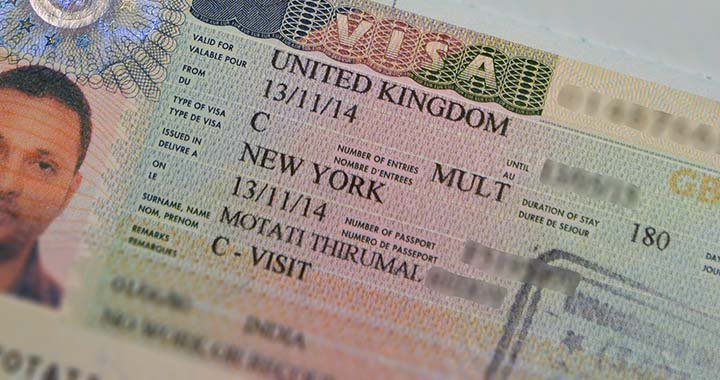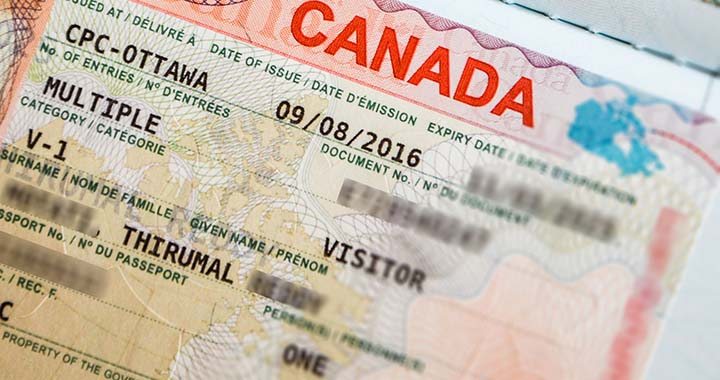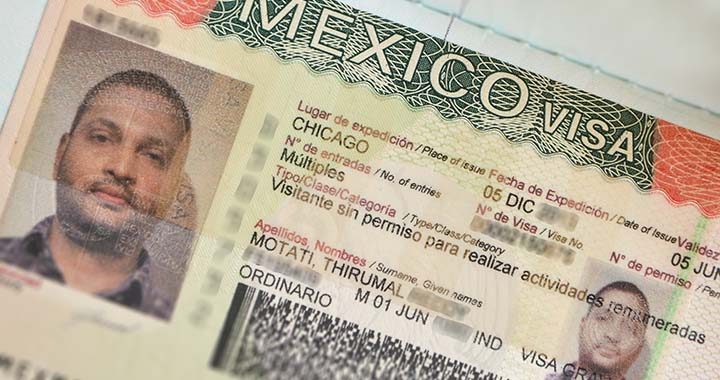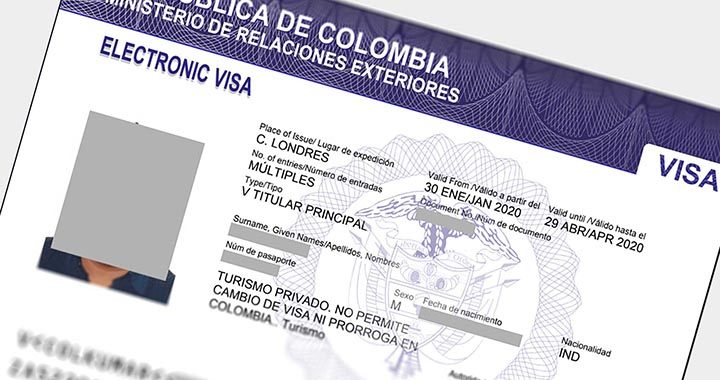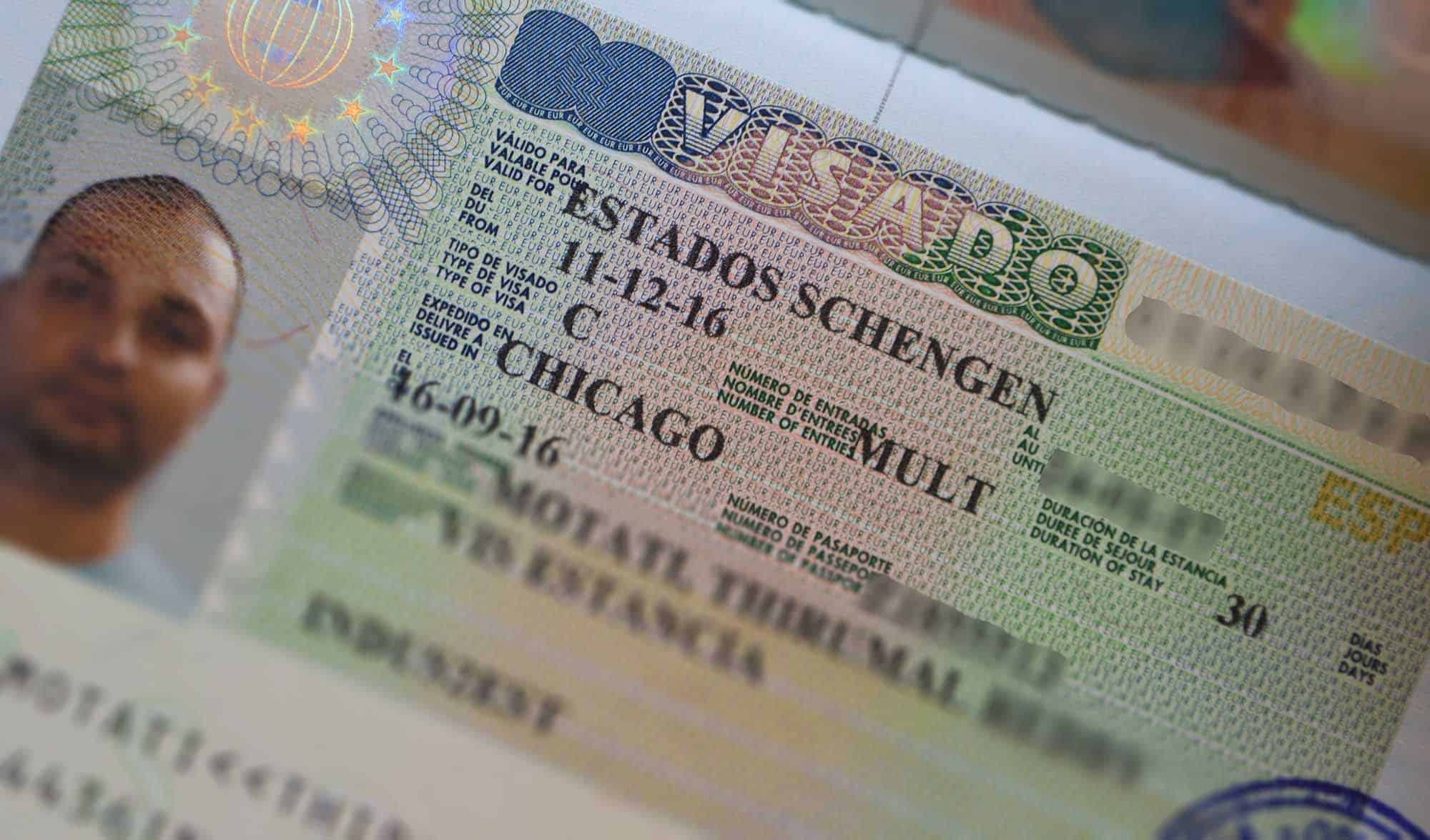
The Schengen visa is a type of visa that allows you to travel freely within the Schengen area. As per the UN, the continent of Europe is comprised of 44 countries. Of these, 27 countries are part of the Schengen agreement. The Schengen agreement abolished internal borders between these 27 countries.
A Schengen visa is a unified visa for short stays (up to 90 days) for these 27 European countries. Therefore, a Schengen visa is the only visa you will need to travel to any of these 27 countries.
Table of Contents

BONUS: FREE eBOOK
Enter your name and email to download the FREE eBOOK: The Secret to VISA-FREE Travel
***
SCHENGEN VISA POLICY
The Schengen visa policy was introduced in 1995 which abolished internal borders between the Schengen countries.
Once you have obtained a Schengen visa, you can travel freely between the Schengen member countries without any border controls. For example, if you enter France and would like to go to Germany, you will not pass through passport controls at the France-Germany border.
Keep in mind that the Schengen visa policy only applies to the Schengen area and not to the entire European Union.
Schengen visa countries
There are currently 27 countries in the Schengen area that you can visit with a single Schengen visa. Below is the list of countries.
- Austria
- Belgium
- Croatia
- Czech Republic
- Denmark
- Estonia
- Finland
- France
- Germany
- Greece
- Hungary
- Iceland
- Italy
- Latvia
- Liechtenstein
- Lithuania
- Luxembourg
- Malta
- Netherlands
- Norway
- Poland
- Portugal
- Slovakia
- Slovenia
- Spain
- Sweden
- Switzerland
Apart from the above 27 Schengen member countries, you also travel to 50 non-Schengen countries visa-free using a Schengen visa.
***
SCHENGEN VISA TYPES
Those intending to visit the Schengen countries for tourism must either be visa-exempt or hold a valid Schengen visa from the embassy.
- Visa EXEMPTION (ETIAS from 2024)
- Uniform Schengen Visa
- Type-A (Airport Transit Visa)
- Type-C (Short Stay Visa for stays less than 90 days)
- Single-entry
- Double-entry
- Multiple-entry
- Type-D (Long Stay Visa for stays more than 90 days)
- Limited Territorial Schengen Visa
For this guide, we will focus only on visas for tourism intent, that is Type-C Uniform Schengen visas.
***
SCHENGEN VISA REQUIREMENTS
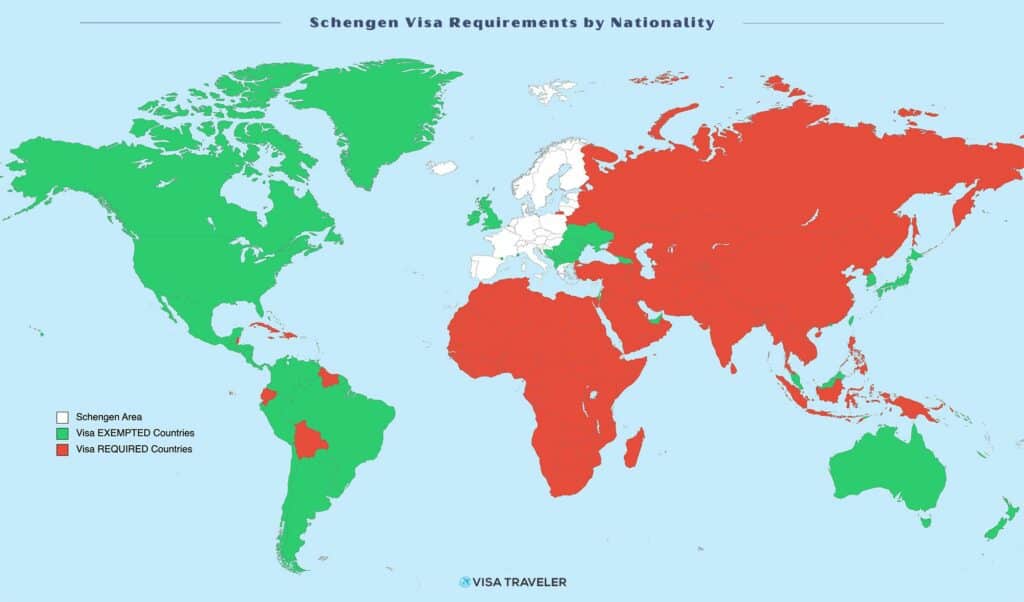
Minimum passport validity required to enter the Schengen area
Passport must be valid for at least 3 months from your planned departure from Schengen area.
Example: If your trip is from Mar 10 to Mar 20, your passport must be valid at least until Jun 20.
—
Visa EXEMPT nationalities
90-day entry
- Albania
- Andorra
- Antigua And Barbuda
- Argentina
- Australia
- Bahamas
- Barbados
- Bosnia And Herzegovina
- Brazil
- Brunei
- Canada
- Chile
- Colombia
- Costa Rica
- Dominica
- El Salvador
- Georgia
- Grenada
- Guatemala
- Honduras
- Hong Kong
- Israel
- Japan
- Kiribati
- Macao
- Malaysia
- Marshall Islands
- Mauritius
- Mexico
- Micronesia
- Moldova
- Monaco
- Montenegro
- New Zealand
- Nicaragua
- North Macedonia
- Palau
- Panama
- Paraguay
- Peru
- Samoa
- San Marino
- Serbia
- Seychelles
- Singapore
- Solomon Islands
- South Korea
- St Kitts And Nevis
- St Lucia
- St Vincent and The Grenadines
- Taiwan
- Timor-Leste
- Tonga
- Trinidad And Tobago
- Tuvalu
- Ukraine
- United Arab Emirates
- United States of America
- United Kingdom
- Uruguay
- Vatican City
- Venezuela
—
Visa REQUIRED nationalities
90-day entry
- Afghanistan
- Algeria
- Angola
- Armenia
- Azerbaijan
- Bahrain
- Bangladesh
- Belarus
- Belize
- Benin
- Bhutan
- Bolivia
- Botswana
- Burkina Faso
- Burundi
- Cambodia
- Cameroon
- Cape Verde
- Central African Republic
- Chad
- China
- Comoros
- Congo, Dem. Rep. of
- Congo, Rep. of
- Cote d’Ivoire
- Cuba
- Djibouti
- Dominican Republic
- Ecuador
- Egypt
- Equatorial Guinea
- Eritrea
- Eswatini
- Ethiopia
- Fiji
- Gabon
- Gambia
- Ghana
- Guinea
- Guinea-Bissau
- Guyana
- Haiti
- India
- Indonesia
- Iran
- Iraq
- Jamaica
- Jordan
- Kazakhstan
- Kenya
- Kuwait
- Kyrgyzstan
- Laos
- Lebanon
- Lesotho
- Liberia
- Libya
- Madagascar
- Malawi
- Maldives
- Mali
- Mauritania
- Mongolia
- Morocco
- Mozambique
- Myanmar
- Namibia
- Nauru
- Nepal
- Niger
- Nigeria
- North Korea
- Oman
- Pakistan
- Papua New Guinea
- Philippines
- Qatar
- Russia
- Rwanda
- Sao Tome And Principe
- Saudi Arabia
- Senegal
- Sierra Leone
- Somalia
- South Africa
- South Sudan
- Sri Lanka
- Sudan
- Suriname
- Syria
- Tajikistan
- Tanzania
- Thailand
- Togo
- Tunisia
- Turkey
- Turkmenistan
- Uganda
- Uzbekistan
- Vanuatu
- Vietnam
- Yemen
- Zambia
- Zimbabwe
IMPORTANT
Palestine and Kosovo are not recognized by at least one Schengen member state. If you are a Palestinian or Kosovo national, please inquire at your nearest Schengen consulate for visa requirements for your passport.
***
SCHENGEN VISA EXEMPTION (ETIAS FROM 2024)
Currently, 62 nationalities can enter the Schengen area without a visa. Though you do not require a visa, you must consider the total duration of your stay in the Schengen area and must carry the mandatory documents.
Duration of Stay in Schengen Area – the 90 days/180 days rule
Non-EU Passport holders who are visa EXEMPT are allowed to stay in the Schengen area countries for up to 90 days within a period of 180 days. This “90 days in any 180 days” applies to all short-stay visitors to the Schengen area.
- Stays in EU countries that are NOT part of the Schengen area (Bulgaria, Romania, Cyprus and Ireland) are not counted in calculating the period of stay.
- Stays in non-EU countries that are part of the Schengen area (Iceland, Liechtenstein, Norway and Switzerland) are counted in calculating the period of stay compliance with the 90-day / 180-day rule.
- Both the day of entry and the day of exit are counted in the calculation.
- The 180-day period is referenced backward from the day of checking.
- A simple rule of thumb is, if you are out of the Schengen area for a continuous period of 90 days allows you a new stay of 90 days.
You can use the Schengen calculator to determine the number of days you are allowed to stay in the Schengen area. Here is the manual on how to use the Schengen calculator.
Documents to carry
Visa EXEMPT individuals must carry the following documents when entering the Schengen member states.
- Valid passport
- Proof of onward travel
- Proof of accommodation
***
SCHENGEN VISA FROM THE EMBASSY
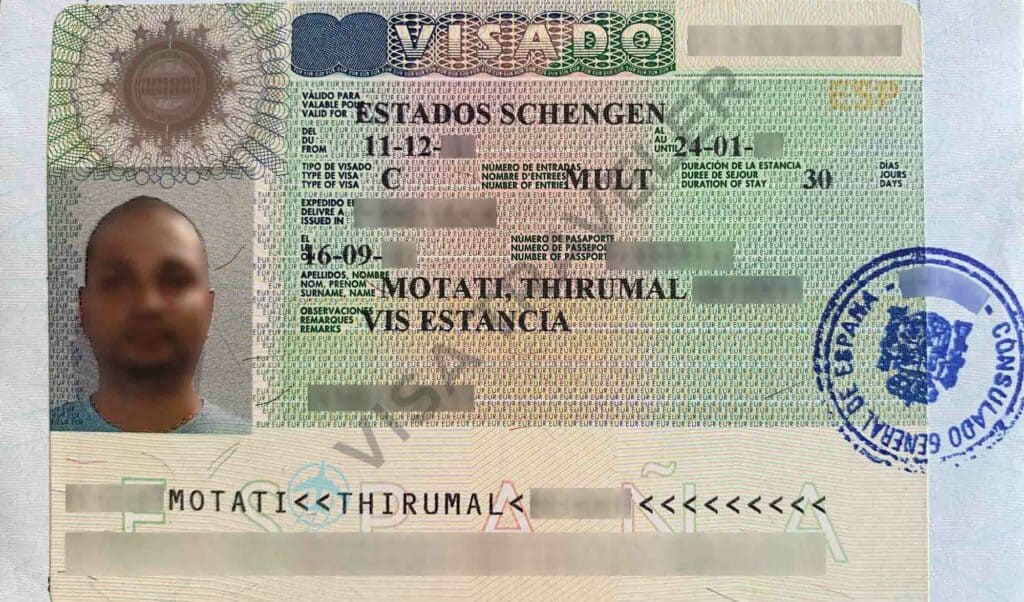
Currently, 104 non-EU nationals require a visa to enter the Schengen area. These nationals must be in possession of a Schengen visa when entering the Schengen zone.
Validity of Schengen Visa
The Schengen visa validity depends on whether you are a first-time applicant or a subsequent applicant.
First-time application: If you are applying for the first time, your visa will be valid for the exact number of days you have asked for. In some instances, you may get a few buffer days as additional.
For example, if your itinerary is 12 days, your visa will be valid for exactly 12 days.
As a first-time visa applicant, I suggest adding a few extra days to your itinerary so you will get a few extra days on your visa validity. That way, you can have some flexibility in your travel plans.
First-time Schengen visas are usually single-entry or double-entry.
Subsequent applications: If you are applying for the second or third time, you may likely get a visa valid for 90 days. The visa may likely be multiple-entry.
Rules for obtaining Schengen visa valid for 1, 2 or 5 years
- To obtain a 1-year Schengen visa, you must have obtained and used 3 Schengen visas within the last 2 years
- To obtain a 2-year Schengen visa, you must have obtained and used a 1-year Schengen visa within the last 2 years
- To obtain a 5-year Schengen visa, you must have obtained and used a 2-year Schengen visa within the last 3 years
Duration of Stay in Schengen area – the 90 days/180 days rule
Visa-required passport holders are allowed to stay in the Schengen area for up to 90 days within a period of 180 days. This “90 days in any 180 days” applies to all short-stay visitors to the Schengen area.
- Stays in EU countries that are NOT part of the Schengen area (Bulgaria, Romania, Cyprus and Ireland) are not counted in calculating the period of stay.
- Stays in non-EU countries that are part of the Schengen area (Iceland, Liechtenstein, Norway and Switzerland) are counted in calculating the period of stay compliance with the 90 days / 180-day rule.
- Both the day of entry and the day of exit are counted in the calculation.
- The 180-day period is referenced backward from the day of checking.
- A simple rule of thumb is, if you are out of the Schengen area for a continuous period of 90 days allows you a new stay of 90 days.
You can use the Schengen calculator to determine the number of days you are allowed to stay in the Schengen area. Here is the manual on how to use the Schengen calculator.
Where to apply for Schengen visa
Most tourists plan to travel to more than one country during their Europe trip. The Schengen visa is valid for 27 countries, so you must first determine your Schengen country of application. This helps greatly in avoiding visa delays and refusals.
Follow the below guidelines to determine your country of application.
CASE 1: If you plan to visit only one Schengen country, you must apply for your visa at the consulate of that particular country.
Example: If you are traveling to Spain only, then you must apply for your visa at the Spain Embassy or Consulate.
CASE 2: If you plan to visit several Schengen countries, you must apply for your visa at the consulate of the country of your main destination (the country where you will be spending most days).
Example: If your itinerary is 10 days of which 4 days in Spain and 6 days in France, then you must apply for your visa at the French consulate since you will be spending more time in France.
CASE 3: If you intend to visit several Schengen countries but do not have a main destination (same amount of days in each country) then you should apply for your visa at the consulate of the country of your first point of entry.
Example: If your itinerary is 10 days of which you will be spending 5 days in the Netherlands first and 5 days in France after, then you must apply for a visa at the Netherlands Consulate since the Netherlands is your first port of entry.
When to apply for Schengen visa
You must apply for your Schengen visa no later than 15 days prior to your travel. Otherwise, your application will not be accepted.
You can apply for your visa up to 6 months in advance. So, apply as soon as you can to avoid delays, refusals and disappointments.
Schengen Visa Application Process
There is a plan to implement online systems of Schengen visas. But as of now, the visa can only be applied in person. Visa application is a 4 step process
- Fill out your Schengen visa application form 14076-02 (online or offline)
- Schedule an in-person Schengen visa appointment (at the consulate or visa agent such as VFS Global)
- Appear in person to submit your visa application, documents, biometrics and visa fee
- Pick up your original passport with the approved visa.
You can apply for a Schengen visa through a visa/travel agency in some countries. Travel agencies that offer vacation packages to Europe usually are allowed to apply for the visa on your behalf.
Documents required for Schengen visa
The following documents are required for your Schengen visa.
- Filled and signed visa application form (online or downloadable from the consulate page)
- Original passport
- Copy of the visa/residence permit if applying in a third country
- One recent passport-size photo
- Confirmed round-trip flight reservation
- Proof of accommodation
- Proof of health insurance
- 3-month bank statement
- 3-month salary slips
- Original signed employment letter
- Cover letter with a detailed itinerary
Application Form
Filling out the application form can be done online or offline depending on the Schengen country. For example, the application form for France is online whereas for Spain, it’s paper.
Photo Requirements
The photo must be 4.5cm x 3.5cm. That is, 4.5cm high and 3.5 cm wide. The face must be 3.2 to 3.6cm or 70-80% of the photo.
Proof of Health Insurance
It’s MANDATORY to submit travel medical insurance for Schengen visa. You must attach a certificate of travel health insurance in the Schengen area or worldwide with 100% coverage with no deductibles or co-pays.
It must have a minimum coverage of €30,000 EUR for medical, hospitalization, emergencies and repatriation services.
You can purchase Schengen travel insurance from any online provider. You can cancel and get a refund if your visa is denied. Once you purchase the travel insurance for your desired dates, you can download the visa letter that you can submit with your visa application.
Recommended Schengen visa insurance:
- VisitorsCoverage | Meets Schengen visa insurance requirements | Costs $1 a day
Schengen Visa Fee
The Schengen visa fee for an adult is approximately €80 EUR. For children between the ages of 6 and 12, it’s €40 EUR. Children under the age of 6 are exempt from paying the visa fee.
The fee must be paid in local currency, in the form of cash or bank money order. Most Schengen consulates have outsourced the visa process to VFS or BLS. Therefore, in addition to the visa fee, you may have to pay a fee for biometric collection and courier services.
Schengen Visa Processing Time
Schengen visa processing can take from 15 calendar days to 45 calendar days depending on the consulate, country or agent. Apply no later than 15 days prior to your travel. Otherwise, your application will not be accepted.
***
ENTRY AND EXIT PROCEDURE AT THE AIRPORT
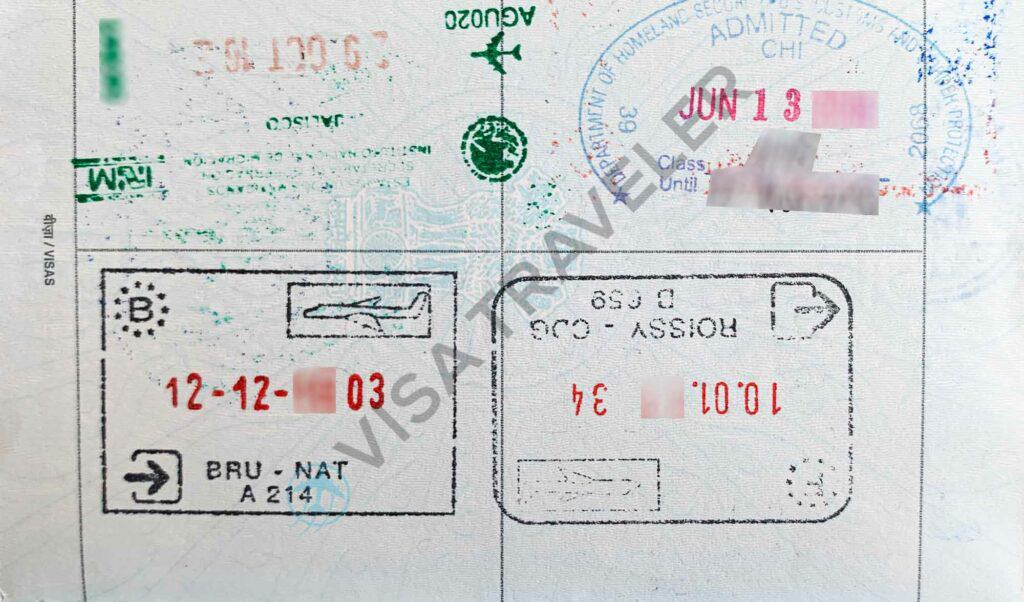
Entering Schengen Zone by Air
You do not need to fill in any arrival/departure card on entering the Schengen area. Do not panic if your flight attendant did not give you an arrival/departure card on your flight.
At the immigration, you will generally be asked about your final destination, places you will be visiting and the number of days you are planning on staying. You might also be asked if it is your first time in Europe.
The immigration officer will stamp your passport upon arrival. The number of days you are allowed to stay will not be marked on your passport.
As always, carry a copy of your return ticket and hotel booking just in case. If you are traveling on a one-way ticket, don’t forget to get proof of onward ticket.
Leaving Schengen Zone by Air
You must go through passport control on exiting the Schengen area. You will not be asked any questions unless you have overstayed your visa. Passport control is fairly quick, about 10-15 minutes depending on the airport.
***
FREQUENTLY ASKED QUESTIONS (FAQs)

What is the minimum bank balance required for a Schengen visa?
The minimum bank balance required for a Schengen visa depends on the country you are applying from and the duration of your stay. As a general rule, you should have at least €60 per day for your stay in the Schengen area. This should cover your travel expenses, including accommodation, food, and transportation.
Does Schengen visa cover Switzerland?
Yes, the Schengen visa covers Switzerland. Switzerland is a member of the Schengen Area. You can travel to Switzerland and other Schengen countries with a single visa.
Which Schengen visa is hardest?
There is no specific Schengen visa that is considered the hardest to obtain. But visa refusal statistics show that Norway, France and Belgium have the highest refusal rates.
Which country gives fastest Schengen visa?
The processing time for a Schengen visa may vary depending on the country you are applying from and the purpose of your visit. However, some countries may have faster processing times than others. For example, Estonia, Latvia, and Lithuania are known to have relatively fast processing times.
Which country gives Schengen visa easiest?
There is no specific country that gives Schengen visa easiest. But visa refusal statistics show that Finland, Hungary, Estonia and Poland have the lowest refusal rates.
Do US citizens need a visa to enter the Schengen area?
No, US citizens do not need a visa to enter the Schengen area. US citizens can travel to the Schengen territory for up to 90 days within any 180-day period without a visa for tourism or business purposes.
***
SUMMARY

Europe is usually the first choice for most first-time international travelers. It’s a dream for most people to visit European countries at least once in their lifetime. Europe has such an impeccable beauty, history, art, and cuisine.
A Schengen visa allows you to travel freely within the Schengen area, comprised of 27 European countries. Non-EU nationals who are visa-exempt and visa-required are allowed to stay in the Schengen zone for up to 90 days within a 180-day period.
Schengen visas are single, double or multiple-entry visas. First-time Schengen visas are limited in validity, but subsequent visas are 90 days to 5 years of validity.
***

